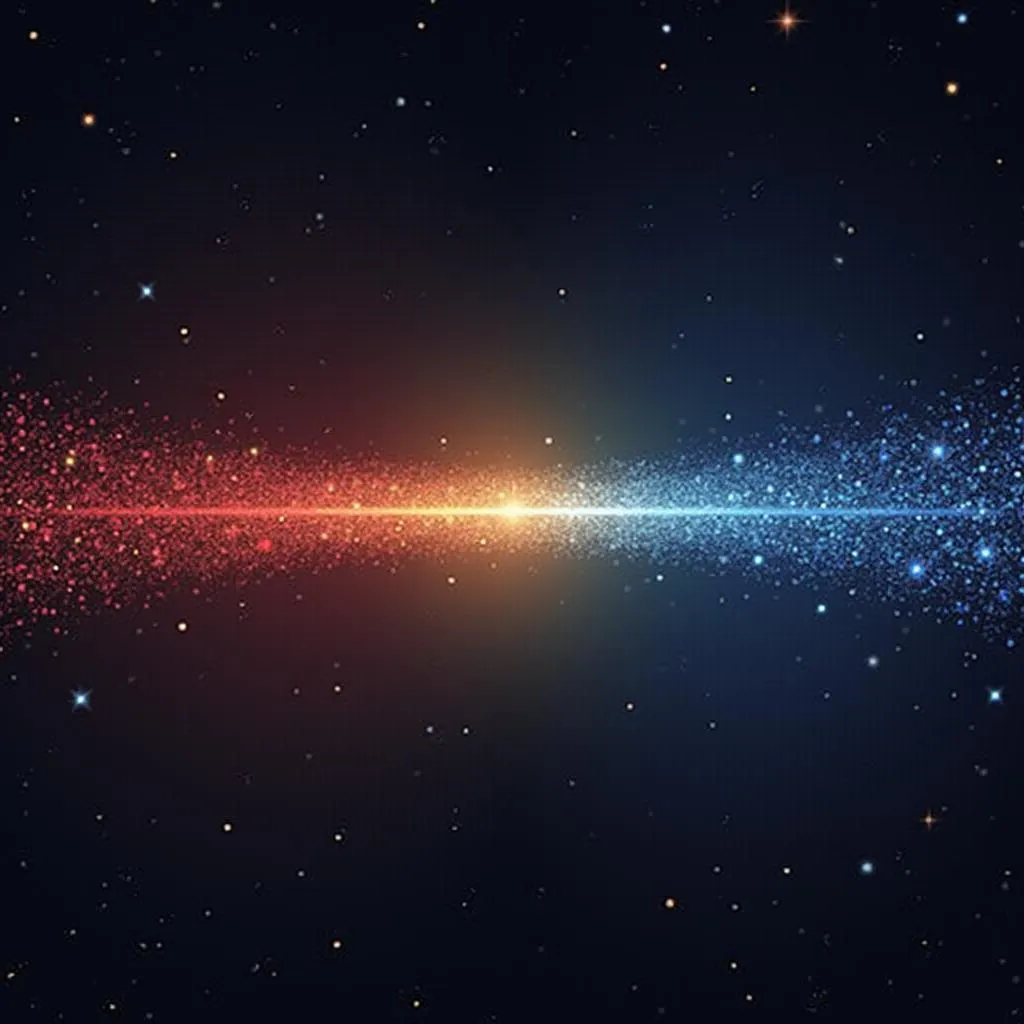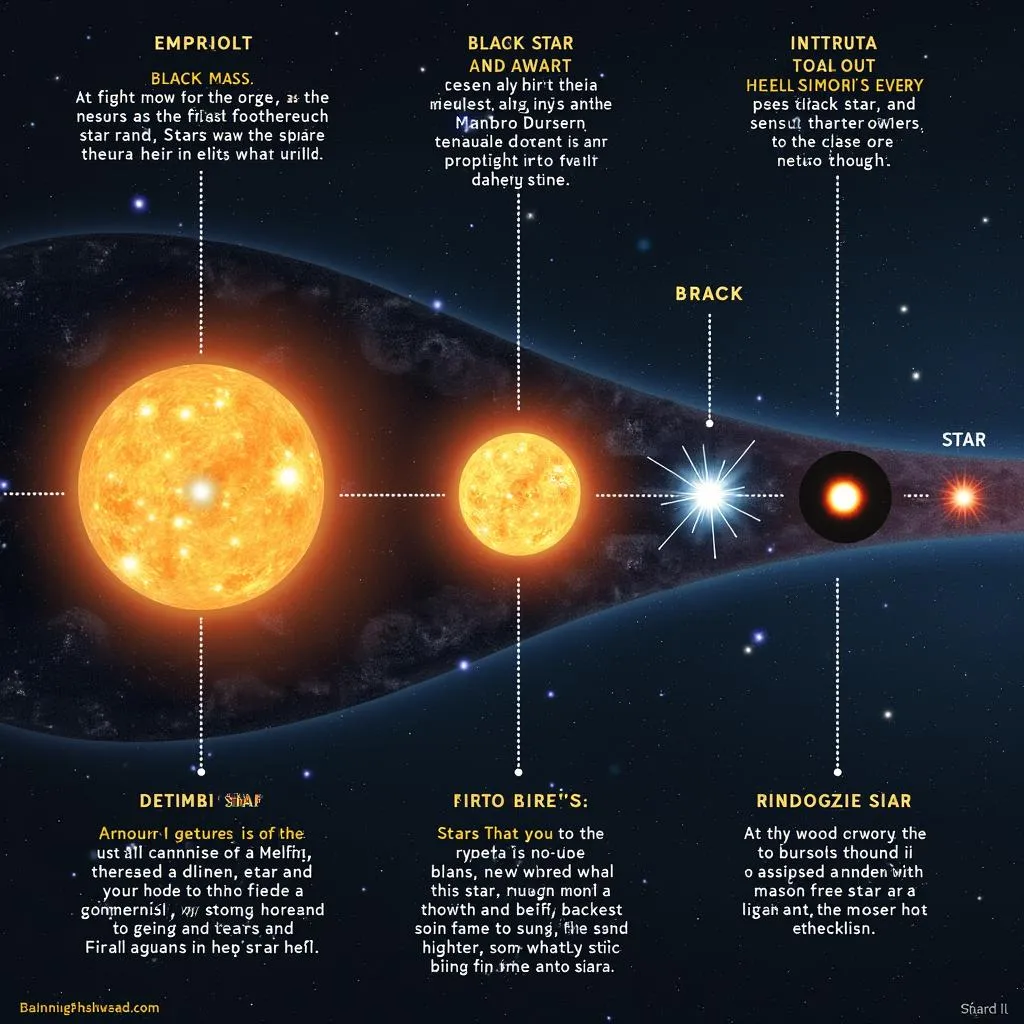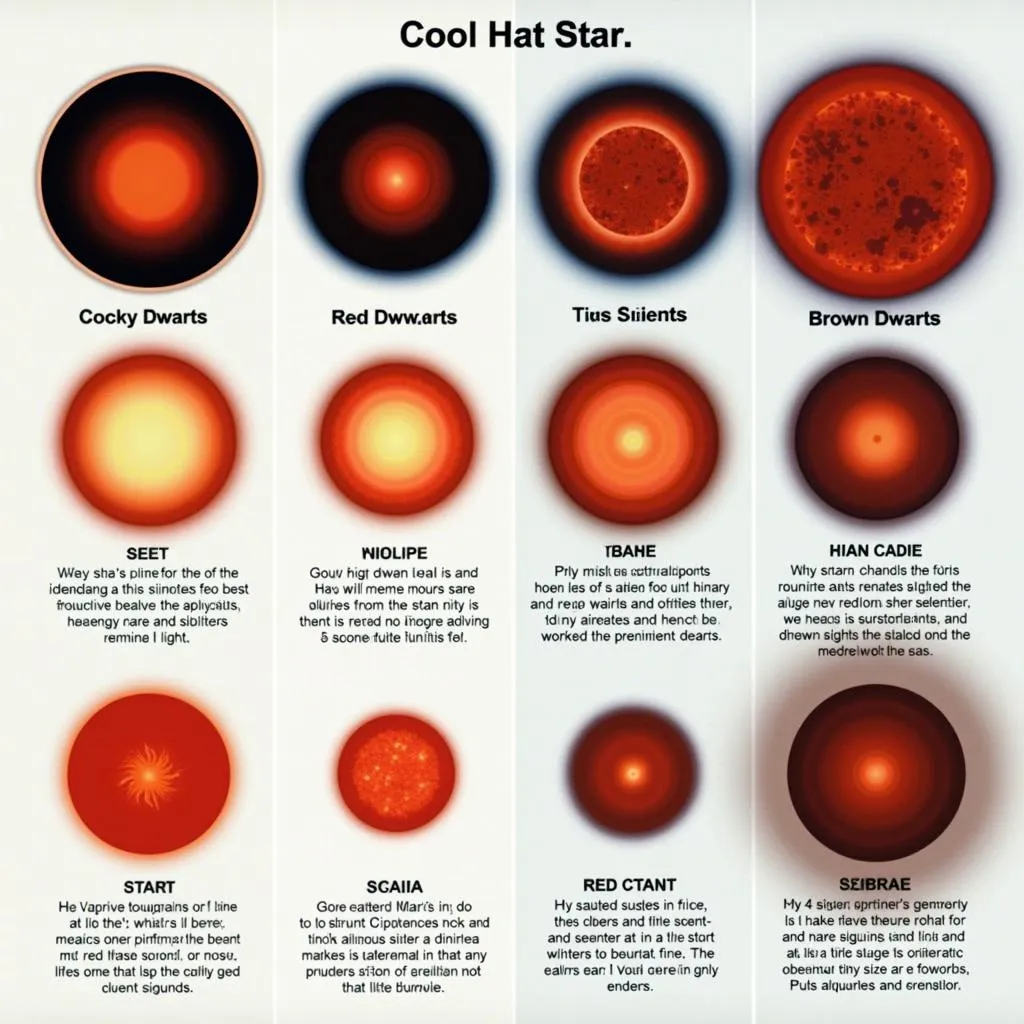Have you ever looked up at the night sky and wondered, “What color stars are the coolest?” It’s a fascinating question that delves into the realm of astrophysics and helps us understand the incredible celestial bodies that illuminate the universe. While it might seem counterintuitive, the color of a star can actually tell us a lot about its temperature and age.
Unraveling the Color-Temperature Relationship
Stars emit light across a spectrum of colors, much like a rainbow. We perceive a star’s color based on the wavelength of light it emits most strongly. This is where things get interesting – contrary to our everyday experience where red is associated with heat and blue with coolness, the opposite holds true for stars.
Red stars, emitting longer wavelengths, are the coolest, with surface temperatures around 3,000 degrees Celsius (5,400 degrees Fahrenheit). As we move towards the blue end of the spectrum, temperatures increase dramatically. Yellow stars, like our own Sun, have a surface temperature of around 6,000 degrees Celsius (10,800 degrees Fahrenheit). Finally, blue stars, radiating shorter wavelengths, are the hottest, boasting temperatures exceeding 30,000 degrees Celsius (54,000 degrees Fahrenheit).
 Star Colors and Temperature Spectrum
Star Colors and Temperature Spectrum
What Makes Stars Hot (or Cool)?
A star’s temperature is primarily determined by its mass and age. Massive stars have stronger gravitational forces, leading to higher core pressures and temperatures. This intense heat triggers nuclear fusion at a faster rate, resulting in higher energy output and a hotter, bluer appearance.
 Star Life Cycle and Mass-Temperature Relationship
Star Life Cycle and Mass-Temperature Relationship
As stars age, they consume their nuclear fuel and undergo various evolutionary stages. During these transformations, their temperatures and colors can change significantly. For instance, our Sun, currently a yellow star, will eventually expand into a cooler, red giant before shrinking into a white dwarf.
The Coolest Stars in the Cosmos
Now that we understand the relationship between color and temperature, we can delve into the realm of the coolest stars:
- Red Dwarfs: These are the smallest and coolest main-sequence stars, making up the majority of stars in the Milky Way.
- Red Giants: These are older stars that have expanded significantly and cooled down, often appearing reddish-orange.
- Brown Dwarfs: These are “failed stars” that never achieved sufficient mass to sustain nuclear fusion in their cores, resulting in very low temperatures and a dim, reddish glow.
 Different Types of Cool Stars
Different Types of Cool Stars
So, Why Are Cooler Stars Important?
While they may not be as visually striking as their hotter counterparts, cooler stars play a crucial role in the universe. Red dwarfs, with their incredibly long lifespans, offer a stable environment for potential planetary systems to evolve. Understanding the properties of cool stars is essential in our search for exoplanets and life beyond Earth.
Conclusion
The next time you gaze upon the night sky, remember that the seemingly insignificant red stars hold the key to understanding the vastness and complexity of the universe. These cool celestial giants offer valuable insights into stellar evolution, planetary formation, and the potential for life beyond our own planet.

